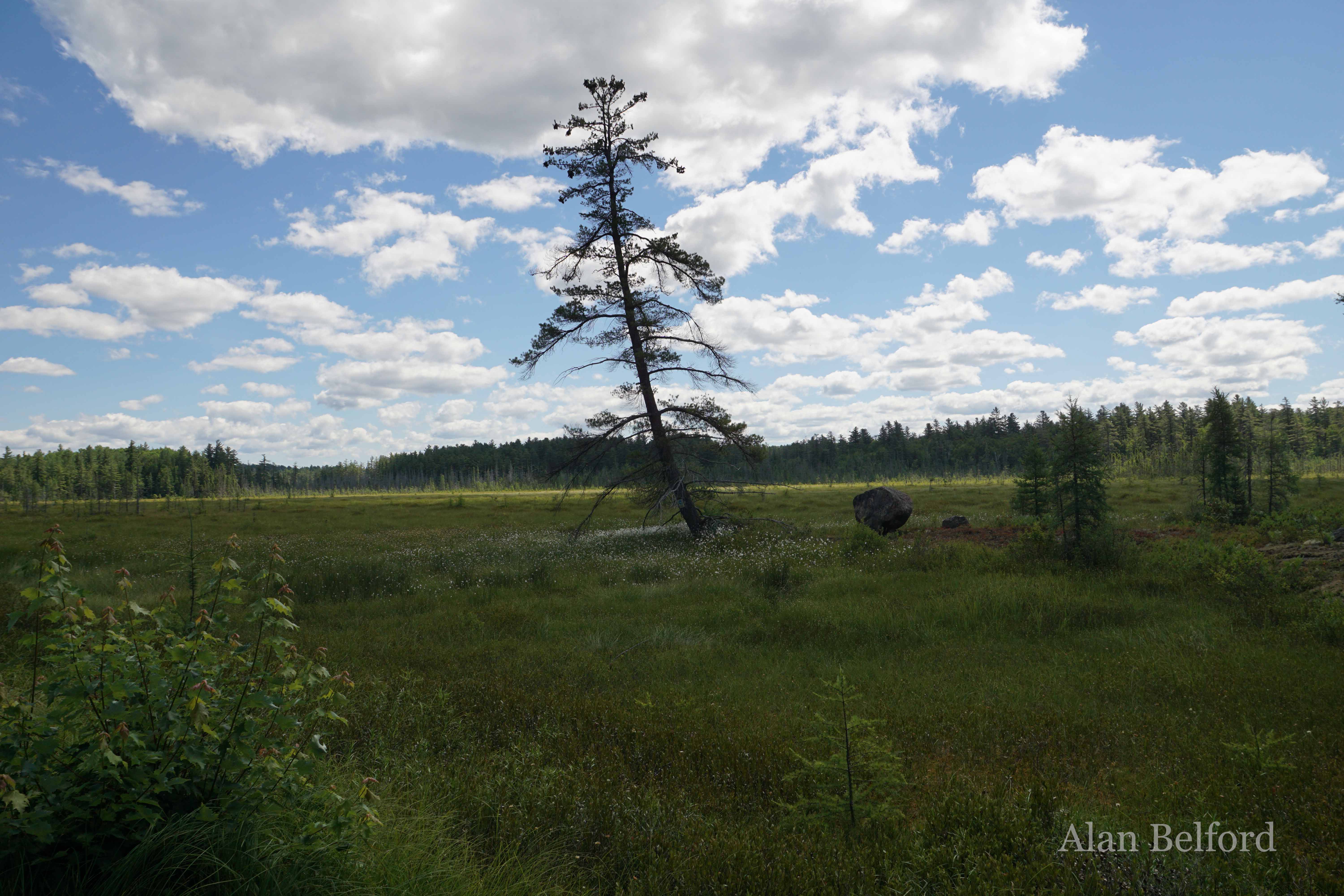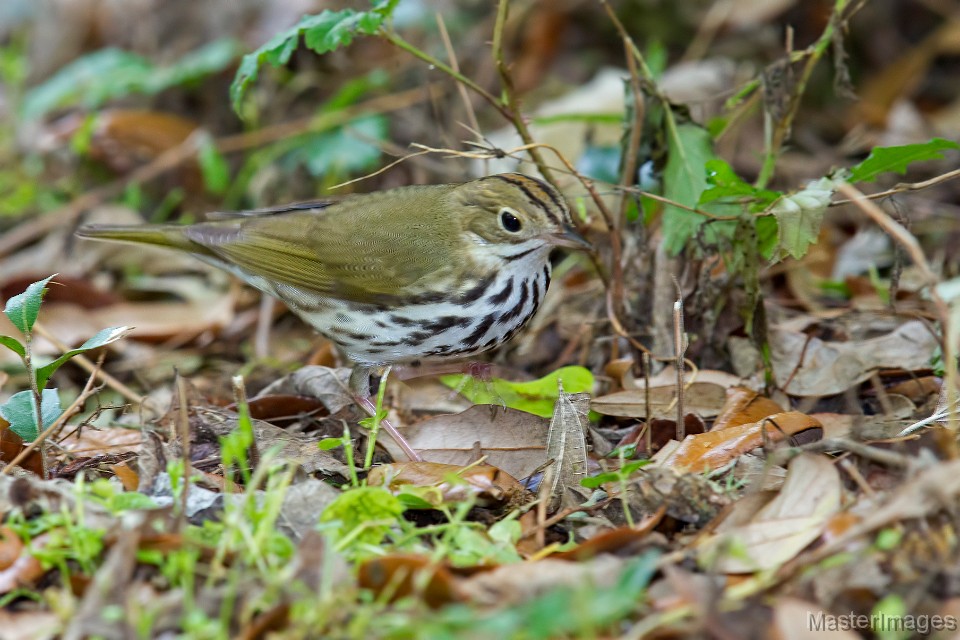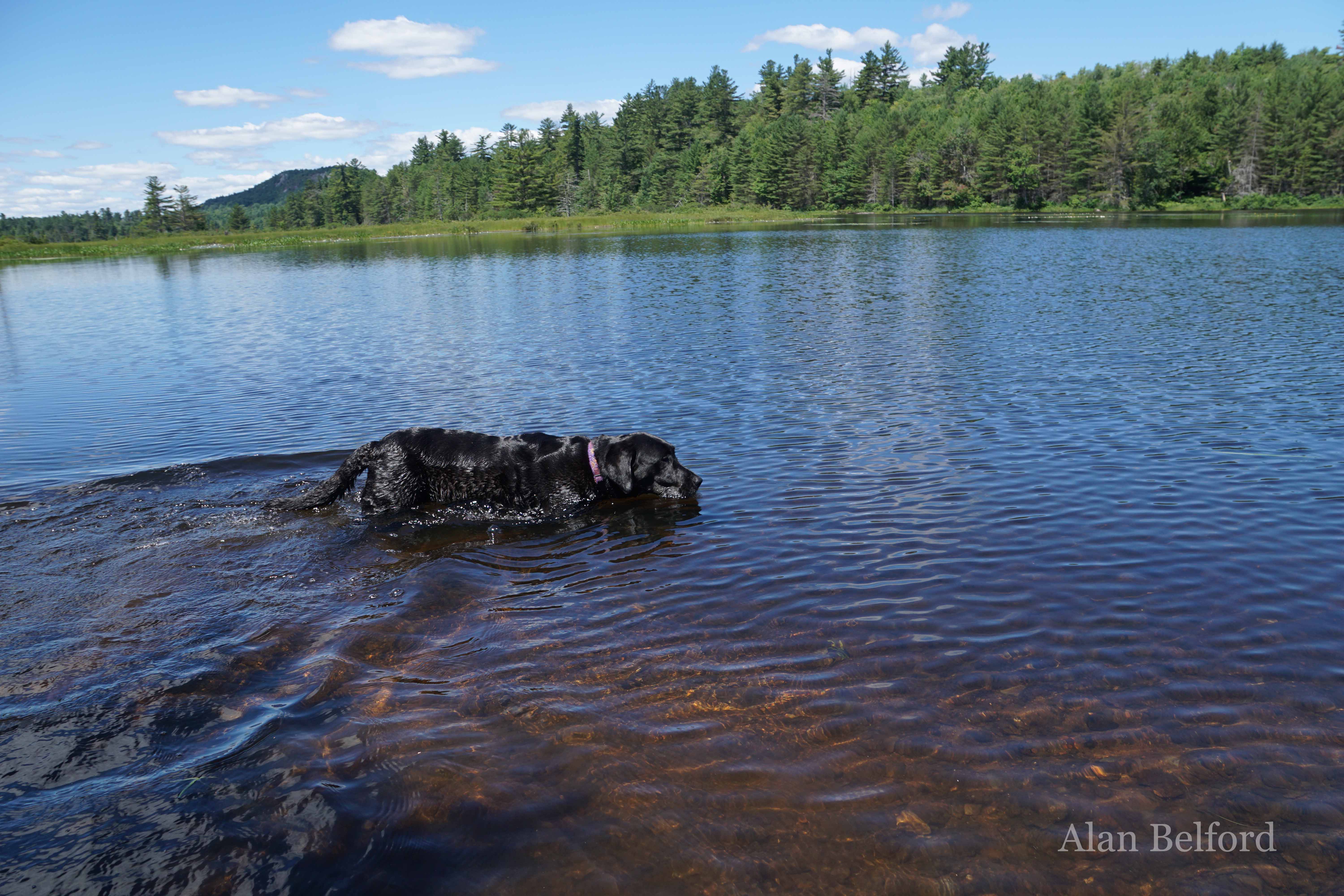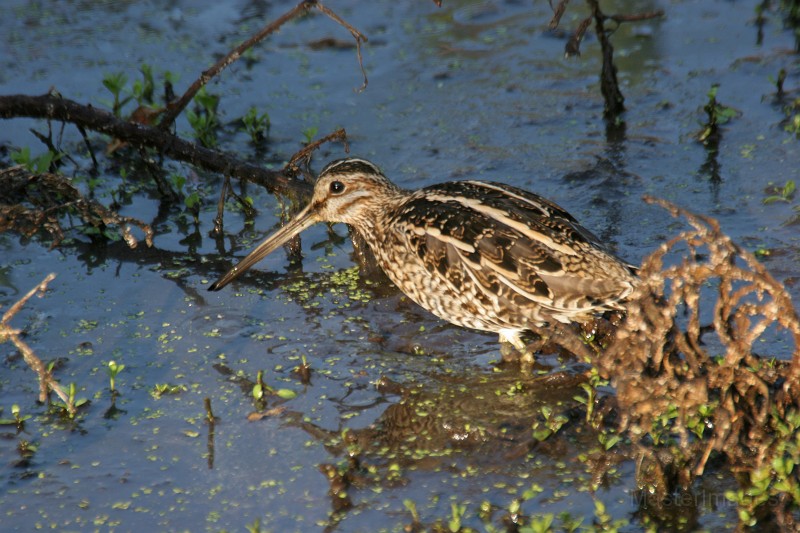A splendid place
Hitchins Bog offers birders a great place to explore boreal habitat, reached along an old railroad bed. Since the bed runs roughly north-south through the bog, birders have their choice of whether they hike north into the bog from the end of Sabattis Road or if they hike south from the end of Route 421. Either way, the trip requires some hiking to reach the bog itself, but on the way the railroad bed leads birders through a variety of habitats.
Hiking to the Bog River
On a recent trip there Wren, my dog, and I took the route from 421, starting south through the initially overgrown railroad bed until the shade of the trees kept the plants from growing too high. Anyone hiking to Hitchins should know that the railroad bed is old and dilapidated, making many of the ties difficult for walking in spots. But we picked our way along the path, keeping a good pace to help keep the deer flies and mosquitoes from hounding us too easily and we made good time through the deciduous and mixed forest which surrounds the tracks for better than a mile on the way to the Bog River. Even though my goal was to get into the bog itself, I was already amassing a bird list as we went with species like Hermit Thrush, Ovenbird, Blue-headed and Red-eyed Vireos, Black-throated Blue Warbler, Yellow-rumped Warbler, Yellow-bellied Sapsucker, Winter Wren, White-breasted Nuthatch, and Northern Parula to start my day.

The tracks opened up beneath the sun as we reached the Bog River, helping push the mosquitoes back in to the shadows, aided by a growing breeze which helped keep us more comfortable. To this end I also paused at the bridge for Wren to swim and drink – the morning was early but the day was quickly warming. The habitat around the bridge is interesting anyway, and I watched three Eastern Kingbirds twitter loudly as they caught insects from the small trees surrounding the water - waterways are often the best places to look for kingbirds in the middle of the Adirondacks, as they are not always easy to find in the park. I also began to add more common species from the bridge including Song Sparrow, Pine Warbler, Swamp Sparrow, Belted Kingfisher, Red-winged Blackbird, Common Grackle, and Cedar Waxwing.

Snakes, bear poop, and the bog
With Wren satiated for the time being from her swim – or more correctly her swims – we continued south. The need to watch my step on the old railroad ties proved helpful in noting other wildlife species as we went, and I spotted a couple large garter snakes which slithered into hiding before I could snap any photographs. A smooth green snake was far more cooperative for me, and I watched it and the birds in the boggy wetland which surrounded the tracks for a while before we moved on with the snake still sunning itself.
Looking down at my footing was also a good way to spot the piles of bear scat that decorated the tracks throughout our hike. In fact, I found not one, not two, not three, but eight piles of bear poop while we walked – all in different stages of decay. Some were a couple weeks old and others were quite fresh – clearly the bruins use the tracks as a highway. After all, blueberries lined much of the route along the path and I snacked on the ripe fruits as we went. The bears will be feasting there shortly.

My own distracted thoughts of fresh blueberries in my pancakes may have contributed to missing the Wilson’s Snipe sitting still on the tracks until it suddenly popped up perhaps ten feet in front of me and flew off into the surrounding wetland – looking down had not helped me notice the well-camouflaged bird until it had flown away! 
But I continued to find other species as we went – particularly as we reached the bog itself, which stretched out before us. Lincoln’s Sparrows and White-throated Sparrows sang from the bog mat while others chipped and called close to the tracks. I spotted a few recently fledged young birds looking disheveled and comical as they learned the art of finding their own food while continuing to beg from their parents. I also found our first Palm Warblers of the day, another denizen of these boreal habitats. I was hoping to find a Black-backed Woodpecker, but came up empty on that goal, and the Northern Flickers and Hairy Woodpecker I spotted would have to do instead. But a calling Olive-sided Flycatcher was a nice boreal find, and I was soon watching Alder Flycatchers, Common Yellowthroats, Purple Finches, and the impressive flight acrobatics of a Chimney Swift. Other flyover birds included an Osprey and a Great Blue Heron.

We walked for a while through the bog and I attempted to take photos of Lincoln’s Sparrows and Palm Warblers before deciding it was time to turn around. We had covered a couple miles and the day was heating up for our return trip toward lunch. But the quickening breeze helped cool us as we retraced our steps and Wren once again swam at the Bog River when we crossed the bridge. I would have liked to have joined her but I didn’t want to take the time to change and take off my boots. Perhaps I would swim when we returned to the car parked at Horseshoe Lake. We eventually returned there not only ready for a swim, but also for fresh water and lunch, happy to cool off and refuel in preparation for our next adventure.
Late summer and early fall offer great opportunities for birding and boreal birding in the Central Adirondacks. Plan your trip today by visiting our lodging and dining pages.






